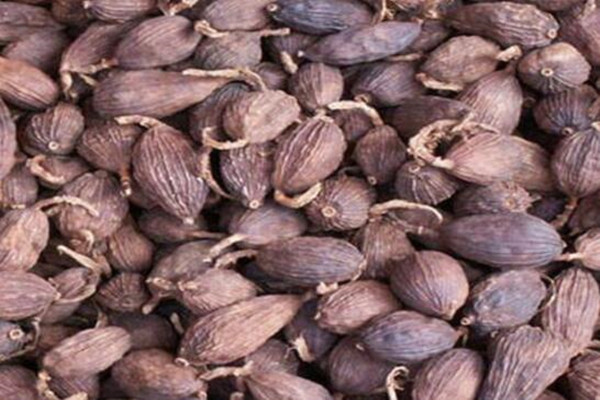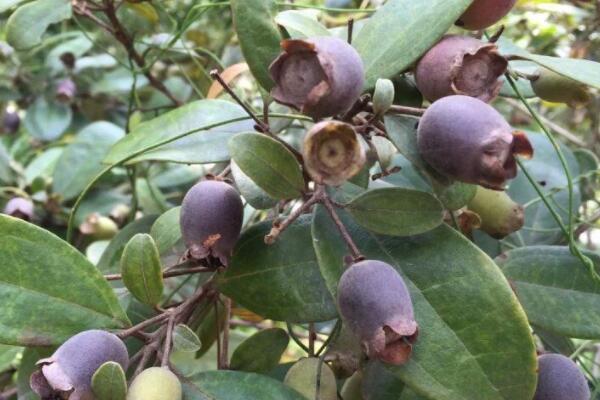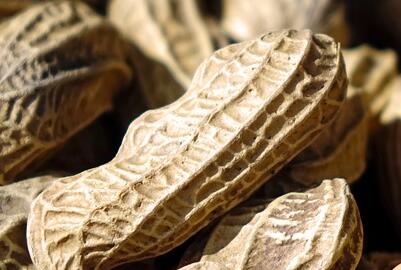How long does the grass and fruit blossom and bear fruit? How much is the price per jin? What are the effects and effects?
Grass fruit is one of the bulk varieties of traditional Chinese medicine for both medicine and food. Grass fruit is used as seasoning spice, and the aromatic oil can be extracted from the whole plant with high economic value. So, how long does the grass fruit blossom and bear fruit? How much is the price per jin? What are the effects and effects?

How long does the grass and fruit blossom and bear fruit?
Grass and fruit blossom and bear fruit for 2 years, and the yield is higher after 6-7 years. The florescence is from April to June, and the fruiting period is from August to September in Guangdong and from November to December in Yunnan. When the fruit turns reddish brown and uncracked, it is harvested, dried in the sun or dried over low heat, or scalded in boiling water for 2 to 3 minutes and stored in a dry and ventilated place.
How much is the price of grass and fruit per jin?
What are the effects and effects of grass and fruit?
1. Grass fruit is used to cook dishes, but to remove fishy food and improve the taste of dishes. When cooking fish and meat, grass fruit tastes better.
two。 Herbaceous fruit is pungent and warm, with the function of warming the stomach and relieving smooth qi, mainly for heartache, epigastric distension, nausea and vomiting, cough and sputum, etc., but also can detoxify alcohol and remove halitosis. But what needs to be reminded is that patients with qi deficiency or blood deficiency avoid eating grass and fruit.
3. Grass and fruit is used as seasoning; aromatic oil can be extracted from the whole plant. The fruit is used in medicine, which has the function of dryness and dampness, invigorating the spleen, eliminating phlegm and intercepting malaria.
Planting method of grass and fruit
1. Select a place
Choose fertile valleys or streams, cut down too many trees, control shade at 50%, remove weeds, and turn the ground to crumble soil.
two。 Reproduction
Propagate with seeds and separate plants. The mother plant with strong growth and high yield was selected for seed propagation and harvested when the pericarp was purplish red and the fruit was fully ripe. Peel off the recovered fruit, soak the seeds for about 10 hours, rub with coarse sand to wipe off the colloid layer on the surface, and then sow the seeds. The nursery is selected in the mountainous area with sparse trees, fertile soil and good drainage. Turn the land to make beds, apply dried pig, cow dung and turf mud as base fertilizer, break the rake flat and make a seedbed. Strip sowing, row spacing 15 cm, sowing depth 1.5 cm, covering soil and grass after sowing, watering.
The seeds are usually sown in September to October or February to March in the second year. Seedlings emerged about 30 days after sowing, and the emergence rate reached 80% in 50 days. From December to February of the second year, when the temperature dropped below 15 ℃, the seeds stopped germinating, and then germinated and unearthed one after another when the temperature rose above 18 ℃ from March to April. If the collected seeds cannot be sown immediately, they need to be mixed with wet sand for storage. After the seedlings are unearthed, where there is no shade, it is necessary to build a shade to cover the sun, pull out weeds and apply plant ash to make the seedlings strong. Every 667 square meters (1 mu) of seedlings can be planted on 8 hectares of land. The one-year-old rhizomes with buds can also be taken from the mother plant for ramet propagation.
3. Colonization
The planting site is selected on wet, fertile land with shade on the edge of the forest and the edge of the ditch. Turn 20cm to 27cm deep, and after weathering for a period of time, you can dig a hole with a width of about 13cm and a depth of 7cm to 10cm according to the distance between 1.3cm and 1.7m, and straighten the seedling in the hole and compact it with soil. It is often planted before and after the Spring Equinox.
4. Field management
Weeding: weeding is carried out from April to June and from 10 to 12 months after fruit harvest to prevent trampling on rhizomes and aboveground stems.
Cultivate the soil: cultivate the soil before flowering to make the buds grow strong. If you find that the roots are exposed, you should fertilize the soil to facilitate the roots to absorb nutrients.
Drainage irrigation: in the flowering season, if the rainfall is too much, it will cause rotten flowers; on the contrary, if it is too dry, the flowers will easily dry up, resulting in reduced production. Therefore, if there is a drought, water should be diverted for irrigation if possible. If Rain Water is too much, we should do a good job of drainage, remove weeds and reduce humidity to reduce bud decay. In the flowering season, if there is a rain from May to July, it is beneficial to the fruit and fruit preservation, and the yield is also high.
Pruning: the leaves of grass and fruit should be renewed every year, and the dead old plants should be cut off in time to facilitate the growth of new plants. Some over-dense branches and leaves can be harvested properly when pruning, which can be used for essential oil production. The time of pruning and picking leaves was carried out after fruit harvest from October to November.
5. Pest control
Blight: when it is serious, it will cause pieces of seedlings to fall and die. The diseased plants can be pulled out and disinfected and sterilized with lime powder around; after the seedlings are unearthed, they can be prevented with 1RU 120 Bordeaux solution, or irrigated with 1000 times of carbendazim, or sprayed with 65% Dysen zinc 600x solution. Spray once every 10 days for 2 times in succession.
Leaf spot: the spot is born on the leaf and is oval, nearly round or irregular in the initial stage. The plaque has a yellowish-brown halo on the edge, white in the center, 1mm to 11mm in diameter, and even patches in the later stage. The mycelium could not grow when sprayed with 400x solution of Chunleimycin, and the inhibition rate of mycelium growth was more than 61% when sprayed with 1500 fold solution of Jinge, 800x solution of carbendazim and 1000 fold solution of Yibao.
Blight: the disease occurred from the adult stage to the fruiting stage, and the rhizome of the diseased plant rotted in water, resulting in the death of the plant. Spraying with 1000-fold solution of Yi Bao can make the mycelium of the pathogen unable to grow; spraying with 600x solution of Chlorothalonil, 500x solution of Yibao and 400x solution of Chunreomycin can inhibit the growth of pathogenic mycelium up to more than 60%; different strains of Trichoderma harzianum have good inhibitory effect on the pathogen of grass fruit blight.
Insect pests: mainly heart-drilling insects, the larvae drill into the stem and cause withered seedlings in serious cases. It is found that the core-drilling seedlings should be cut off in time and sprayed with 50% fenitrothion EC 800-1000 times.
Time: 2019-03-22 Click:
- Prev

How much is a pound of bush myrtle seed? When is it appropriate to plant? How? (with efficacy)
Myrtle is an evergreen shrub used for landscaping, ecological environment construction, hillside greening and soil and water conservation. So how much is a kilo of seeds? When is it appropriate to plant? How? What does it do? From Jiangsu nursery stock planting base to understand that the price of myrtle seeds is still very low
- Next

2017-2018 peanut price market analysis: peanut prices continue to fall, where should growers go?
In 2017, since the domestic peanut went on the market, the overall market situation has been in a mixed situation, and the market price has declined to a certain extent. Recently, peanut prices of sea cucumbers are on a downward trend, and growers do not know whether to plant them in 2018 or not.
Related
- Fuxing push coffee new agricultural production and marketing class: lack of small-scale processing plants
- Jujube rice field leisure farm deep ploughing Yilan for five years to create a space for organic food and play
- Nongyu Farm-A trial of organic papaya for brave women with advanced technology
- Four points for attention in the prevention and control of diseases and insect pests of edible fungi
- How to add nutrient solution to Edible Fungi
- Is there any good way to control edible fungus mites?
- Open Inoculation Technology of Edible Fungi
- Is there any clever way to use fertilizer for edible fungus in winter?
- What agents are used to kill the pathogens of edible fungi in the mushroom shed?
- Rapid drying of Edible Fungi

